Energy
Why Eastern Canada Needs to Support Western Provinces and Reject the Government’s Energy Policies
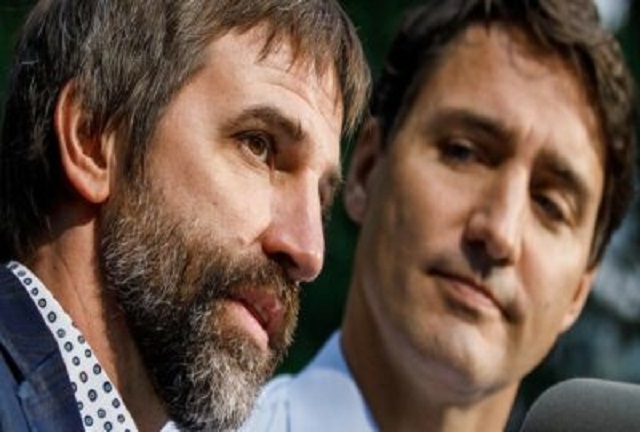
From EnergyNow.ca
By Catherine Swift
There are currently about 400 different laws, regulations, taxes and other measures in Canada that serve as greenhouse gas (GHG) reduction measures. No one has a clue which of them are effective or useless or how much they are damaging our economy and reducing Canadians’ standard of living needlessly.
Energy
Here’s what they don’t tell you about BC’s tanker ban
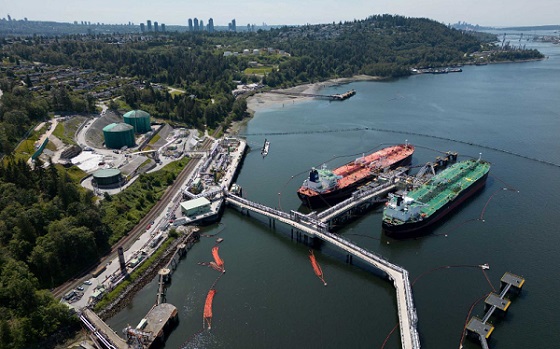
From Resource Works
By Tom Fletcher
Crude oil tankers have sailed and docked on the British Columbia coast for more than 70 years, with no spills
BC Premier David Eby staged a big media event on Nov. 6 to once again restate his opposition to an oil pipeline from Alberta to the Prince Rupert area.
The elaborate ceremony to sign a poster-sized document called the “North Coast Protection Declaration” was dutifully covered by provincial and national media, despite having no actual news content. It is not a response to Alberta’s plan to finance preliminary work on a new oil pipeline, Eby insisted. It’s to confirm the direction of growing the BC economy without, you know, any more oil pipelines.
The event at the opulent Vancouver Convention Centre West was timed to coincide with the annual BC Cabinet and First Nations Leaders Gathering, a diplomatic effort set up 10 years ago by former premier Christy Clark. This year’s event featured more than 1,300 delegates from 200 First Nations and every BC government ministry.
A high-profile event with little real news
The two-day gathering features 1,300 meetings, “plus plenary and discussion sessions on a variety of topics, including major projects, responding to racism, implementation of the Declaration Act, and more,” the premier’s office announced.
Everyone’s taxpayer-funded hotels and expense accounts alone are an impressive boost to the economy. Aside from an opening news conference and the declaration event at the end, the whole thing is closed to the public.
The protection declaration is a partnership between the BC government and the Coastal First Nations, Eby said. As I mentioned in my Oct. 15 commentary, Coastal First Nations sounds like a tribal council, but it isn’t. It’s an environmental group started in the late 1990s by the David Suzuki Foundation, with international eco-foundation funding over the years that led to the current name, Coastal First Nations Great Bear Initiative.
The evolution of the Coastal First Nations initiative
Their current project is the Great Bear Sea, funded by $200 million from the federal government, $60 million from BC, and $75 million from “philanthropic investors.” This is similar to the Great Bear Rainforest conservation project, backed by mostly US billionaire charity funds, that persuaded Justin Trudeau to turn the voluntary tanker exclusion zone into Canadian law.
Leadoff speaker in Vancouver was the current Coastal First Nations president, Heiltsuk Chief Marilyn Slett. She repeated a well-worn story about her remote Central Coast community of Bella Bella still struggling with the effects of an “oil spill” in 2016.
In fact, the 2016 event was the sinking of a tugboat that ran aground while pushing an empty fuel barge back down from Alaska to a refinery in Washington to be refilled. The “oil spill” was the diesel fuel powering the tugboat, which basic chemistry suggests would have evaporated long ago.
Fuel dependence on the remote BC coast
Remote coastal settlements are entirely dependent on fuel shipments, and Bella Bella is no different. It has no road or power grid connections, and the little seaside village is dominated by large fuel tanks that have to be refilled regularly by barge to keep the lights on.

Alaska North Slope crude has been shipped by tanker to Washington and beyond for more than 60 years. Yes, there’s a North Coast “exclusion zone” where US-bound tankers go west around Haida Gwaii rather than down the Inside Passage, but once the ships reach Vancouver Island, they sail inside right past Victoria to refineries at Cherry Point, March Point, and other US stops.
Through the tall windows of the Vancouver convention centre, you can watch Aframax crude tankers sail past under the Second Narrows and Lions Gate bridges, after loading diluted bitumen crude from the expanded Westridge Terminal in Burnaby. That is, of course, the west end of the Trans Mountain Pipeline, which has operated since 1954 with no spills, including the branch line down to the Cherry Point complex.
There are many more crude tankers exiting Vancouver now that the TMX expansion is complete, but they aren’t filled all the way because the Second Narrows is too shallow to allow that. A dredging project is in the works to allow Aframax-sized tankers to fill up.
A global market for Alberta crude emerges
They enter and exit Burrard Inlet surrounded by tethered tugboats to prevent grounding, even if the tanker loses power in this brief stretch of a long voyage that now takes Alberta crude around the world. Since the TMX expansion, shipments that used to go mostly to California now are reaching Korea, Japan, China, Hong Kong, and Singapore as well.
The US captive discount has shrunk, the tripled pipeline capacity is rapidly filling up, and pumping stations are being added. This is the very definition of Mark Carney’s nation-building projects to get Canada out of the red.
The idea that the North Coast can host fuel barges, LNG tankers, bunker-fired cruise ships, and freighters but can’t tolerate Canadian crude along with the US tankers is a silly urban myth.
Tom Fletcher has covered BC politics and business as a journalist since 1984. [email protected]. X: @tomfletcherbc
Energy
The Carney Government is Hijacking the Phase “Energy Superpower” to Advance Their Agenda
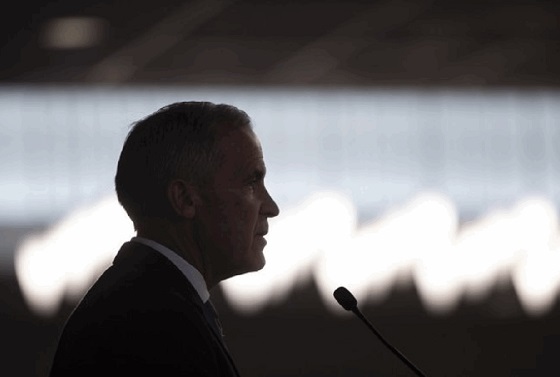
From Energy Now
By Jim Warren
Lately, the spin doctors in the prime minister’s office (PMO) have been hijacking perfectly good words and altering their meaning in the service of the Liberal agenda.
For budgetary purposes “operating expenses” have become “investments.” Similarly, the term “energy superpower” no longer means what people typically think it means. Back in the day when the concept “energy superpower” was popularized, it was used to describe oil rich countries like Saudi Arabia, the other Gulf states and OPEC members.
Those countries are home to the oil sheiks—the leaders of OPEC who capitalized on their dominant position in global energy markets to affect the global oil supply and prices. They also used their control over oil as a source of leverage in the realm of geopolitics.
Wikipedia, the font of knowledge for lazy columnists, describes the traditional meaning of energy superpower as follows “…a country that supplies large amounts of energy resources (crude oil, natural gas, coal, etc.) to a significant number of other countries – and therefore has the potential to influence world markets for political or economic gains. Energy superpower status might be exercised, for example, by significantly influencing the price on global markets or by withholding supplies.”
During the 2025 election campaign Mark Carney’s notion of what constitutes an energy superpower was aligned with the conventional definition. A CTV news report the day after the federal election reminded viewers that on “April 8 at a campaign stop in Calgary, Carney pledged to position Canada as a ‘world energy superpower,’ calling for new [oil] pipelines, including one to Eastern Canada.”
By September of 2025, Carney and his Energy Minister Timothy Hodgson had obviously adopted a new definition. They still boast about making Canada an energy superpower but no longer referred to oil production and new export pipelines as things integral to that goal.
But wait, on Friday November 7 the prime minister told attendees at Canadian Club event in Toronto not to worry the long sought pipeline “was going to happen.”
Pardon me if I’m not convinced. Over the three months prior to Friday the Liberals had left us to assume becoming an energy superpower could happen without increasing oil production and exports.
We are still left with a riddle—what do the Carney Liberals actually mean when they promise Canadians we will achieve “energy superpower” status if crude oil, Canada’s single most valuable export commodity is no longer one of the key components of the strategy to get us there?
Actually, Canada was well on its way to achieving the status of a world class energy superpower until the Trudeau Liberals assumed office. Our budding superpower ambitions were foreclosed on by the Liberals’ growth killing BANANA* legislation which thwarted efforts to increase oil production and exports. The blue-eyed sheiks of Western Canada have been handcuffed and denounced as authors of the upcoming climate apocalypse.
(*BANANA – Build Absolutely Nothing Anywhere Near Anything)
The communications wizards in the PMO abandoned the traditional definition without actually telling anyone they were doing so. They have quietly adopted a fossil fuel-free version of what it means to be a supremely powerful purveyor of energy, but haven’t explained what that entails.
If they chose to be honest with Canadians they would say what they really mean is “green energy superpower.” But if they came clean, it would probably trigger a national unity crisis. Better to leave things loose until the budget has been approved.
Despite wishful thinking in Ottawa, Canada is a long way from winning the race for medals in the field of clean, green energy production. But, we’re so far behind the leaders that Mark Carney thinks he’s first.
Powering the dream of a net zero world will presumably rely heavily on the approximately 28 critical minerals and rare earths required for wind turbines, advanced electric motors and batteries. Canada makes it to the medals podium for just three of the 28. According to a 2024 report published by Our World in Data, Canada is in third place globally for uranium and aluminum production, and cobalt refining.
Australia, a Western-style capitalist democracy which punches close to our weight by many economic measures is far ahead of Canada when it comes to critical minerals production and proven reserves. China is in a class of its own—clearly the world leader in rare earth production and proven reserves, miles ahead of the rest of the world. When it comes to mining and refining of critical minerals Canada has a lot of catching up to do.
Canada is similarly a long way from superpower status when it comes to the manufacturing of polysilicon, the compound required to produce solar electricity, and wind turbines.
Canada does not have any commercial level producers of polysilicon. China has several firms that manufacture it, one of which GCL-Poly has a 22% share of the global market. Polysilicon is also produced by firms in the US, South Korea, Germany, Japan, Norway and Qatar. There once was a company in Canada which imported polysilicon from China which it then used to make solar panels. Apparently it has moved its operations to the US.
Globally, there are approximately 39 manufacturers of large, grid-scale wind turbines located in some 14 different countries. The world’s largest manufacturer, Vestas, is headquartered in Denmark. No large wind turbines are manufactured in Canada. Our role is limited to installation, operations and maintenance.
And, given recent events it is unlikely Canada is going to become a global superpower for the manufacturing of electric vehicles any time soon.
Canada is in third place globally for the production of hydroelectricity, although our 364.2 terawatt-hours (TWH) of electricity we generate pales in comparison with China’s 4,183.4 TWH of hydroelectric production. While the environmentally virtuous may find grounds for bragging rights with respect to our country’s hydro production, it means little in terms of leverage in a global market place. Sure Canadian producers sell electricity into the US power grid, but they are unable to sell it anywhere else. Ocean spanning transmission lines won’t work, too much power is lost when sending power long distances and selling electricity stored in batteries is not commercially viable—the batteries required are simply too big and insanely expensive.
For the foreseeable future the only way Canada can claim superpower status as a producer of clean energy is if the definition is radically changed. Apparently being identified as a clean green energy superpower can now mean that a country makes use of an impressive level of the stuff—the criteria required to be deemed an “impressive producer” is apparently one of those post-modern woke notions whereby each country is entitled to its own green energy truth.
This echoes the casual way social media mavens award superpower status to supposedly inspiring personal characteristics – my superpower is multi-tasking, or baking sourdough bread, or being an avid recycler. It makes about as much sense as claiming you are a hero because you held a guy’s mitts so he could dial 911 to report an accident.
It is sad, but true, that Canada was well on its way to energy superpower status prior to the federal Liberals coming to office in 2015. Crude oil was then and remains Canada’s single most valuable export product. We currently export approximately 4.2 million barrels per day which was worth 153 billion USD in 2024. Back in 2013 and early 2014 when world prices were good the oil industry was generating as much as three to four percent of Canada’s GDP.
Clearly Canada could be doing a whole lot better economically if the federal government got behind the oil industry and removed the barriers to growth in production and exports. Danielle Smith has been trying to alert the Canadian government and public to the reality that completion of a single million barrels per day oil pipeline from Alberta to Prince Rupert could contribute $20 to $30 billion in new revenues to Canada’s GDP, depending on world prices.
That would be a giant leap forward on the path to being a real energy superpower.
-

 Crime1 day ago
Crime1 day ago‘Modern-Day Escobar’: U.S. Says Former Canadian Olympian Ran Cocaine Pipeline with Cartel Protection and a Corrupt Toronto Lawyer
-

 Great Reset2 days ago
Great Reset2 days agoAre climate-obsessed elites losing their grip over global politics?
-

 Business19 hours ago
Business19 hours agoCanada is failing dismally at our climate goals. We’re also ruining our economy.
-

 Daily Caller2 days ago
Daily Caller2 days agoDemocrats Explicitly Tell Spy Agencies, Military To Disobey Trump
-

 Alberta1 day ago
Alberta1 day agoAlberta on right path to better health care
-
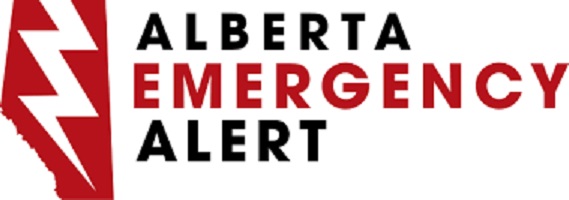
 Alberta1 day ago
Alberta1 day agoAlberta Emergency Alert test – Wednesday at 1:55 PM
-
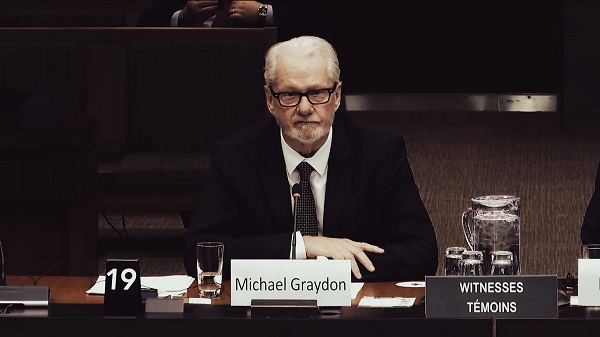
 Business2 days ago
Business2 days agoNearly One-Quarter of Consumer-Goods Firms Preparing to Exit Canada, Industry CEO Warns Parliament
-
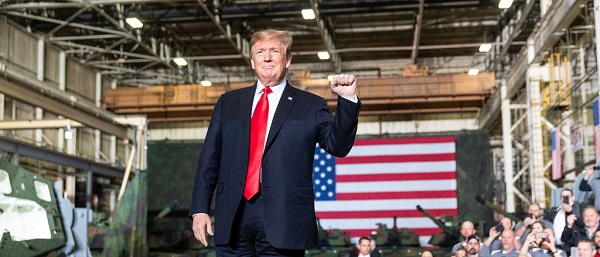
 Daily Caller2 days ago
Daily Caller2 days agoALAN DERSHOWITZ: Can Trump Legally Send Troops Into Our Cities? The Answer Is ‘Wishy-Washy’



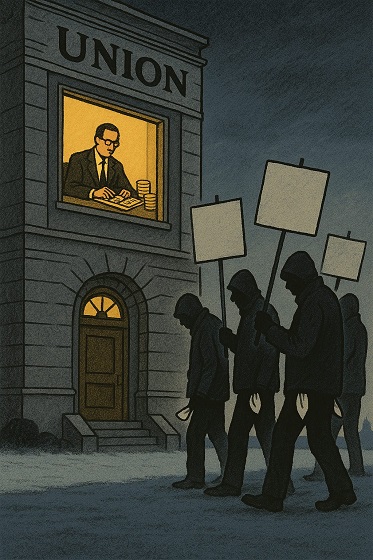




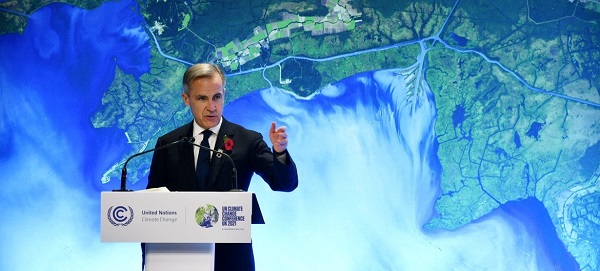
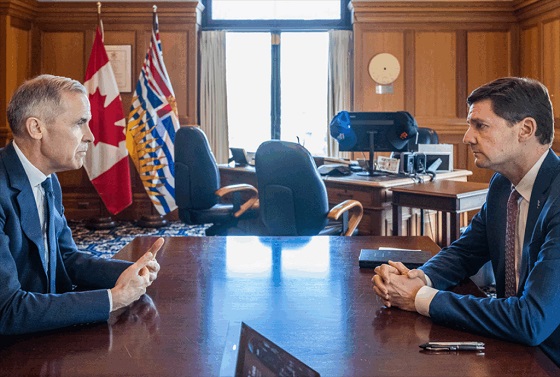
The federal Liberal government’s approach to energy policy has created problematic regional divisions across Canada. It’s time for the East to reject these crass politics and show greater support for the West.
Two recent court decisions — one at the Supreme Court and another at the Federal Court — have ruled against the federal government with respect to the Impact Assessment Act (the “No More Pipelines Bill”) and the single-use plastics ban. The courts found these laws to be unconstitutional as the federal government had intruded on provincial jurisdiction, among some other considerations such as the absurdity of declaring plastics “toxic.”
Around the same time, Environment Minister Steven Guilbeault announced a punitive new emissions cap on the oil and gas industry at COP28, which was also attended by Alberta Premier Danielle Smith and Saskatchewan Premier Scott Moe. This was seemingly timed to embarrass Guilbeault’s provincial counterparts and the Canadian oil and gas executives in attendance.
Back in October, Prime Minister Justin Trudeau announced a three-year exemption for home heating oil from the carbon tax. As heating oil is only used extensively in the Atlantic provinces, this was clearly an attempt to win back sharply declining Liberal support in that region. After Liberals claimed the carbon tax must be applied everywhere — in every industry and every region — this move served as a complete refutation of everything the Liberals had said before. It completely undermined their rationale for the carbon tax.
Meanwhile, countries around the world such as the United Kingdom and much of the European Union have been abandoning or significantly watering down their “net-zero” plans. Auto manufacturers are backing off production of electric vehicles (EVs) as they are not selling and all the lofty goals of the climate-crisis crowd are being questioned, as it has become clear the impact of these policies is hugely damaging to the economy and our standard of living.
For the trillions of dollars spent around the globe to attain the elusive net-zero target, very little has been achieved other than negative impacts on average citizens. Meanwhile, an elite class of “green” activists and government officials travel around the world first-class on the taxpayers’ dime, spewing much carbon in the process.
There are currently about 400 different laws, regulations, taxes and other measures in Canada that serve as greenhouse gas (GHG) reduction measures. No one has a clue which of them are effective or useless or how much they are damaging our economy and reducing Canadians’ standard of living needlessly. This is because the Trudeau government never evaluates the effectiveness of its policies.
The Liberals first sold us the carbon tax as the only measure needed to reduce GHGs, arguing it was a market-based mechanism that would motivate consumers and businesses to make their own sensible decisions to reduce fossil fuel usage. We were also told by former environment minister Catherine McKenna the carbon tax would never exceed $50 a tonne, which we now know was just one of many Liberal bald-faced lies as the tax is slated to increase to at least $170/tonne by 2030.
Despite dishonest claims the carbon tax was the only measure needed, we have subsequently seen the so-called Clean Fuel Standard, the absurdly red-tape intensive Impact Assessment Act (which the Supreme Court has now overthrown), and Guilbeault’s recent emissions cap.
Interestingly, other parts of the economy emit similar amounts of GHGs as the oil and gas sector, but those industries are not subject to an emissions cap. Could it be because those industries are located in regions that tend to vote Liberal, unlike Alberta and Saskatchewan? Perish the thought!
Throughout all of the climate policy overkill, the provinces of Alberta and Saskatchewan have remained steadfast in opposing foolish federal government initiatives based on facts, science and constitutional law. All Canadians should know that Alberta in particular is a disproportionately significant contributor to the rest of Canada in many ways — equalization payments, contributions to programs such as CPP and Employment Insurance as well as personal and corporate taxation and royalty revenue from the oil and gas industry.
It was truly ironic that, in the context of the federal budget earlier this year, Finance Minister Chrystia Freeland boasted that government revenues had come in higher than forecast. Yet the key source for this excess revenue was the oil and gas sector the Liberals are working hard to kill.
Alberta and Saskatchewan have been doing yeoman’s work defending the jurisdictional rights of all provinces and opposing the costly and unproductive federal government policies. At the same time, their success is boosting the economy of the whole country.
While Trudeau plays his destructive and divisive regional games — putting in place policies that benefit some parts of Canada while punishing others — all in the name of Liberal votes, the whole of Canada should call his bluff and support the leadership role that is being taken by the Prairie provinces.
The next federal election would be an ideal time to demonstrate that support.
Catherine Swift is president of the Coalition of Concerned Manufacturers and Businesses of Canada